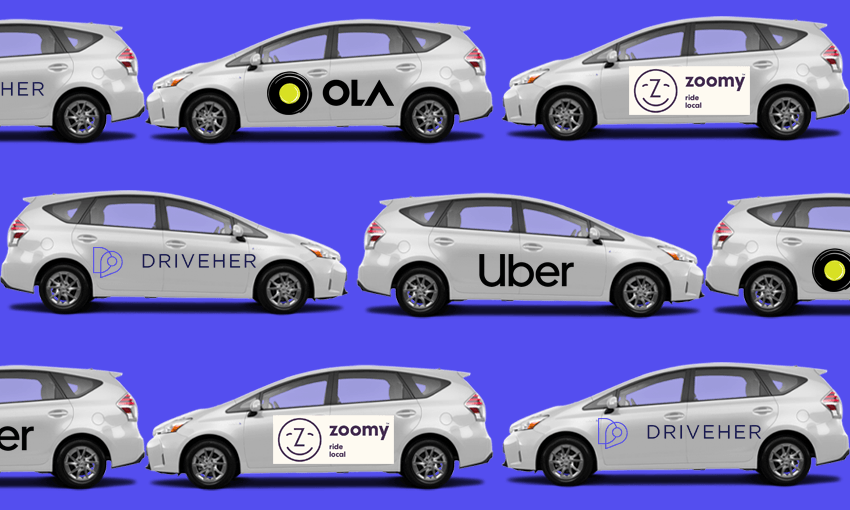Elle Hunt composes a love letter to New Zealand’s online auction site, with which foreign counterparts cannot compare
They looked at the mattress, she and her boyfriend. My two flatmates and I looked at them looking, and with mounting disbelief. We seemed to have reached an impasse.
“Is it soft?” she said, uncertainly. The two of them stood in the open door frame as though our home was dangerous territory that they dared not venture into further. The mattress was propped up against the wall between us. She gave it a tentative pat.
“Not especially,” I said tightly. “It’s as listed.” I already knew that I hated her, and though he had not said a word I could sense that her boyfriend did too. I mean, how couldn’t he? It wasn’t only my time she was wasting.
It had been a done deal, that this “Jacqui” would buy my bed. Its listing on Gumtree had been accurate and comprehensive, the photos well-lit, the price reduced. She had responded promptly with no caveats or questions. Her only concern was that I would be able to dismantle it soon enough for her to pick up that night, around 10pm. For the sake of an easy sale, I resigned myself to spending my last night in Australia on the couch.
Now here we were, stopped, silently, at a roadblock that only Jacqui could see. In my outstretched hand was a bag of bed legs that she had made no effort to take.
Even her boyfriend was regarding her with disbelief. “What do you think?” she asked him pleadingly. The subtext for him was clear to all of us: get me out of this.
He shook his head and laughed, but without humour, as though she dragged him round strangers’ homes all the time. Maybe she did.
“I think I’ll leave it,” she said, addressing the mattress. “Sorry.” Eyes lowered, she quickly turned around and walked out the front door, not closing it behind her but pausing to shut the tiny front gate that my flatmates and I never bothered with because it reached only knee height. The impotence of the gesture made me even more furious.
“What the fuck was that?” said my flatmate.
The whole interaction lasted about three minutes – long enough for her to take an immediate and instinctive dislike to either my mattress or my person. That, or she and her boyfriend were burglars casing the joint. Either way, I was left standing there with a bag of bed legs, a mattress yet to be sold, and a night on the couch ahead of me.
One thought pierced my fog of seething rage, perhaps the only unfair one I’d had all night: this would never have happened with Trade Me.
Trade Me, along with high-quality cabinet food at cafes and some family members, is what I miss most about my life in New Zealand. I had been what one might call a power user before I left for Australia, completing enough trades for the stars on my profile to swell in size. If you had ever browsed its annals and thought “who would ever buy that?”, the answer, up until December 2014, was me.
I had developed the habit in my first year of university. Removed from parental checks for the first time, some of my peers went wild on drugs, casual sex, or instant mee-goreng noodles on leaving their family home. I discovered Trade Me. The best grades I got while I was at university – A++++++, A++++++++, A+A+A+; even, memorably, an AAA+++ – are no less a source of pride for their being absent from my academic transcript.
From the people’s marketplace I procured everything from a larger-than-lifesize ceramic phrenology hand and car badges, to back issues of magazines and half-empty bottles of hair products and nail polish. A month into my membership, it dawned on me: if I was paying money for items that others would throw out without a second thought, maybe someone else would buy mine.
Everything I owned became an auction waiting to be listed. Nothing was too small, too old, too low quality not to have a value attached to it – if it didn’t spark joy, up it went, sometimes for a couple of dollars.
It was not, admittedly, a big profit I was making. Three months after I’d signed up, at a low ebb, tweeted: “I’ve made $10 so far from listing 22 items on Trade Me. Definitely not worth the time and effort … Sigh.”
Once you’d factored in the admin, the emailing, and the schlepping to and from the post office, I was valuing my time at probably less than $5 an hour. But that kind of administrative tedium is what I live for, lending structure and the self-satisfied glow of accomplishment to my day.
It felt like I had a growing empire. Every payment of $4 reminded me: I was a business, man. And the numbers – long before such ego-stoking, peer-to-peer feedback became par for the course with the arrival of the share economy – reflected my unequivocal success: 297 individual members, 312 positive responses. None negative – none even neutral. Put it on my tombstone.
I had some memorable exchanges with those fellow traders, too, kindly agreeing to deliver furniture or passing on always unusable story tips. Once I received a brown-paper package hand-delivered to my flat in Aro Valley: So You’ve Decided to Say Goodbye, a sober book about euthanasia. Days later, I received an apologetic email from the vendor of Auction #370899735 for David Sedaris’s When You Are Engulfed in Flames: “Hey Elle, I just realised I’ve put the wrong book in your mailbox.”
The man to whom I sold a model airplane – as-new, unassembled, an in-joke gifted to me by the friend of an ex-boyfriend – said of our trade: “You should have kept this one, Elle, it’s a great model!”
But every empire must fall. Cruelly, my move to Australia came about so quickly I didn’t have time to purge myself of my belongings on Trade Me. As Marie Kondo knows, the fastest way to get rid of something you don’t want or need is to dump it, in secret, so your friends and family can’t talk you out of it. Making a meagre profit takes time and effort.
In Australia I suffered through Gumtree only when necessary. Its puce brown layout did not facilitate the serendipitous finds in the same way that Trade Me’s did – I mean, when would one ever think to search for a phrenology hand – by seeming to place equal emphasis on dodgy “unpaid content writer” jobs as it did listings for horses or, say, macramé art. And when I moved to the UK, daunted by the bright-white expanse of eBay, where your search is just as likely to throw up a spice rack currently held in a Chinese warehouse as one within a 5mi radius, I gave up altogether. Now my magazine back issues and crusty nail polishes sit idling on my shelves instead of paying for, on average, half a cup of coffee.
A couple of weeks ago I received an email from Trade Me, telling me that my account was about to be closed due to inactivity. I felt a pang of sadness for that period of profit and productivity, perhaps the last time I believed it to be true that the more you work, the more income you make. But then I remembered Jacqui, and figured that it’s possible to waste time as well as money, and that the former may actually be more valuable. Especially when you’re spending all your free time in line at the post office with half-empty hair products and old magazines.





